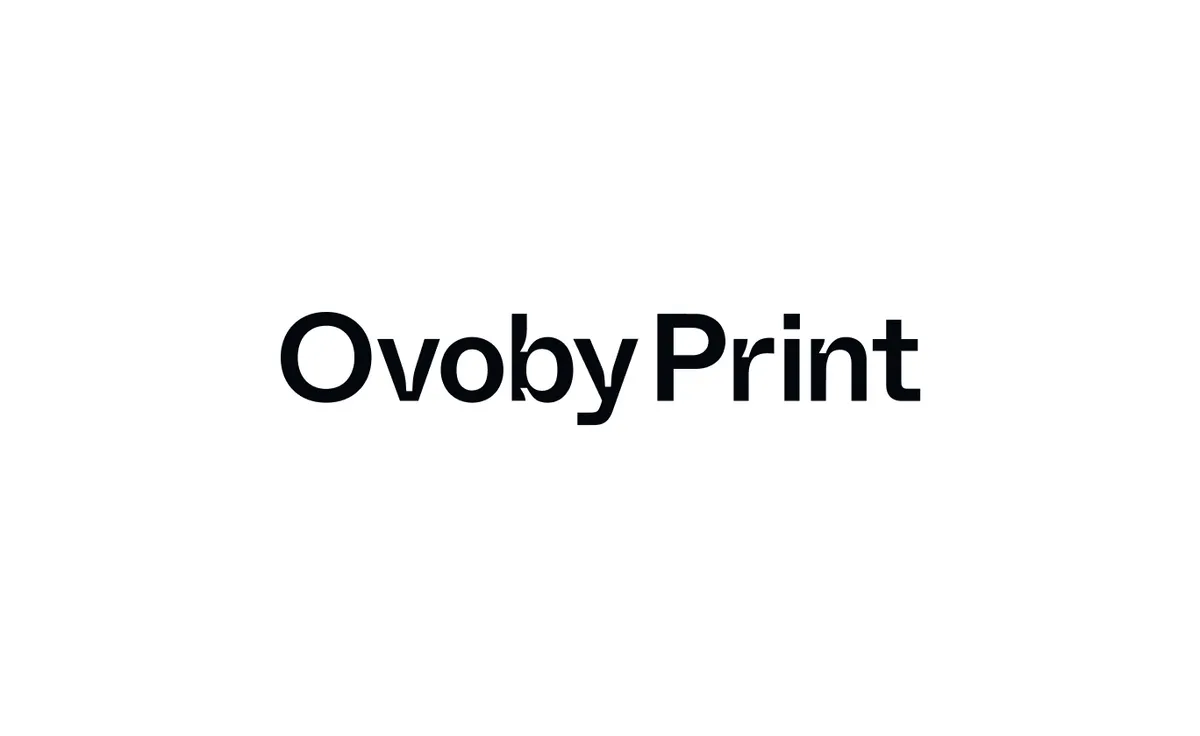We use cookies to make your viewing experience better. By accepting you consent, you agree to our Cookie policy
Umbraco Vs Craft CMS - Which Is Better?

Choosing the right CMS is crucial for any website. With so many options available, it can be tough to decide between Umbraco and Craft CMS. This article compares the two platforms across key factors like usability, scalability and security. Weigh up the pros and cons to help you determine which CMS best fits your needs. You'll also gain insight into real experiences using each system. Let's dive in and resolve the Umbraco vs Craft debate once and for all.
Umbraco leads as the more mature and customizable .NET CMS with better performance, having powered over 500,000 sites since the early 2000s. But Craft's simplified authoring, smoother learning curve, and lighter system requirements make it the easier choice for many, especially non-technical users. The "best" CMS depends entirely on your project's unique needs.
History and Background
Origins and Launch Timelines
Umbraco traces its origins back to 2000 when Niels Hartvig founded the open source .NET CMS while still a university student in Denmark. After an initial beta release in 2001, Umbraco 1.0.0 arrived in 2005 with support for XSLT and user controls on top of the .NET Framework.
Craft CMS emerged much later in 2013, created by Pixel & Tonic as a commercial PHP CMS built with Yii. Craft took a different approach, focusing on a simpler administrative UI and front-end flexibility.
Over the years, Umbraco continued to iterate on its .NET stack, introducing Umbraco 4 in 2009 with MVC support. Umbraco 7 arrived in 2013 with AngularJS integration. The latest Umbraco 8 debuted in 2016 with .NET Core on the backend.
Meanwhile, Craft pursued its own path on the LAMP stack. Craft 2 brought big changes in 2015 like native Matrix field support. Craft 3 launched in 2018 as a major rewrite adding JavaScript enhancements. The team keeps pushing Craft forward with frequent updates.
So while Umbraco has a much longer history starting from 2000, Craft entered later in 2013 but continues to evolve rapidly. Umbraco takes a .NET approach whereas Craft opts for PHP/Yii.
Philosophies and Reputations
Umbraco targets ASP.NET developers as its primary users. It embraces open source as a community-driven project. Umbraco provides a lot of flexibility for developers to customize sites. This developer focus has given Umbraco a reputation for technical complexity.
Craft takes a different approach, targeting less technical users like designers and marketing professionals. It offers an intuitive, user-friendly administrative UI. Craft also prioritizes front-end experience for content editors. This results in a reputation for simplicity and elegance.
However, favourites emerge based on project needs. Umbraco gets picked for complex apps needing .NET extensibility. Craft wins for lighter sites wanting an easy CMS. Both maintain strong reputations in the overall CMS marketplace.
Evolution and Maturity
Umbraco has great momentum as a mature open source CMS. After 20+ years of development, it offers a full-featured enterprise solution. Umbraco also keeps growing, crossing 500,000 sites and 60,000 forum members in 2019.
However, Craft brings its own liveliness as a rapidly evolving commercial CMS. Craft 3 in 2018 modernized both the frontend and backend. The team ships updates every 2-3 weeks, keeping Craft on the cutting edge.
This quick iteration allows Craft to stay ahead in some areas like UI. But Umbraco offsets this with two decades more maturity in areas like documentation and integrations. Overall, Umbraco rates as the more mature option, but Craft continues to push hard catching up in many aspects.
Both CMSs will likely continue evolving in parallel - Umbraco with its community and Craft with rapid commercial development. This gives users a choice between open source maturity and paid innovation. However, Craft's faster release cycle may allow it to address modern CMS priorities like JavaScript integration quickly.
Feature Comparison
Content Authoring Experience
Umbraco and Craft take different approaches for content authoring. Umbraco offers a traditional WYSIWYG editor for writing content. The editor provides common formatting options and integrates with TinyMCE. However, it looks a bit dated compared to more modern web editors.
Craft provides a cleaner, distraction-free writing environment using a Markdown editor by default. This allows for quick formatting using Markdown syntax. Craft also supports WYSIWYG editing with Redactor if desired. Overall, Craft feels more polished and intuitive for content editors.
For content modelling, Umbraco uses Document Types to define content structures. Craft takes a more flexible approach with its field system. Craft makes it easier to reuse content fields across different content types. Craft also supports complex field layouts with native Matrix support.
The admin dashboards also differ. Umbraco shows more technical details related to content, media, and settings. Craft offers a simpler activity log style dashboard focused on content editing tasks. For non-technical users, Craft provides a smoother authoring experience.
Administration and Customization
Umbraco offers more advanced customization capabilities for developers. Custom data types, controls, and APIs can be built on top of Umbraco's .NET framework. However, this power comes at the cost of complexity. Many customizations require coding skills.
Craft offers simplification by providing the most common needs out of the box. Examples include native Matrix support and flexible fields. The Control Panel UI also streamlines managing content, users, and settings. Custom plugins can also extend Craft, but Umbraco provides deeper .NET-based extensibility.
For workflows, Umbraco supports team collaboration through its publish/unpublish model. However, it lacks revision history and requires customization for previewing unpublished content. Craft provides more robust workflow tools like versioning, drafts, and change logging. It makes collaboration easier without the need for coding.
Core CMS Features
For templating, Umbraco uses Razor for .NET while Craft relies on Twig for PHP. Both support nested templates and layouts. Craft's Twig implementation feels lighter and faster versus Razor's verbosity. However, Razor provides a more robust platform for advanced .NET developers.
Umbraco caches both content and media by default to optimize performance. Craft relies more on external caching from FastCGI caching to Redis. While Umbraco bakes in caching capabilities, Craft expects sites to leverage standard PHP/LAMP caching approaches.
For localization, Umbraco supports running multilingual sites through its translation features. Craft provides similar translation management capabilities. However, Craft makes it easier to reuse content across locales through its Entries and Categories model.
Overall, Umbraco and Craft offer all the core features required in a modern CMS. But Craft's choices like Twig, Markdown, and simpler data modelling tend to provide a smoother authoring and development experience for many use cases. However, Umbraco provides greater underlying extensibility capabilities through .NET.
Beginner Friendliness
Learning Resources
Umbraco provides extensive documentation for developers. Its documentation covers topics ranging from core concepts to creating custom packages. Video tutorials are also available through Umbraco TV. However, beginners may find the docs focused on .NET and backend development.
Craft takes a simpler approach with documentation aimed at both developers and users. Its docs use clear language and practical examples tailored for common tasks. Short video crash courses also teach CMS basics. Craft's learning resources cater well to non-technical users.
For training, Umbraco offers instructor-led courses for developers through CodeGarden and Umbraco TV. Courses like "Kickstart" teach creating sites. Craft provides self-paced video courses instead of live training. These cover topics from installing Craft to building websites.
Overall, Craft's documentation and training provide an easier path for non-developers getting started. Umbraco has more learning resources but targets .NET developers.
Onboarding Experience
For new users, Umbraco can feel overwhelming. Its dashboard exposes many technical details. Creating content and designing templates require learning Razor syntax. A developer background helps use Umbraco effectively.
Craft offers a gentler initial learning curve. The Control Panel provides a simple, focused UI for managing content and users. Templating uses the cleaner Twig syntax. Markdown for writing alleviates the need to learn complex text editing tools.
This results in a smoother onboarding experience for beginners. Non-technical users can comfortably publish content after learning a few core Craft concepts. Umbraco benefits from .NET power but has a steeper onboarding curve.
Ongoing Support Options
Umbraco cultivates an active developer community. Its forum contains over 200,000 discussion posts for asking questions. Umbraco also hosts local user groups called "Hublons" for in-person meetups. This provides great peer support.
For official support, Umbraco offers assisted packages starting at £369/year for core support. Packages add perks like guaranteed response times and access to private repositories. But base community support is free.
Craft provides business-class support for a fee. Packages start at $299/year for limited email support. Higher tiers at $999+/year offer assets and faster responses. No free community support system exists except for docs.
Umbraco's free community forum is a big plus for beginners needing assistance. Craft's paid-only support can feel limiting but produces quality responses. Umbraco's open ethos wins for ongoing help and guidance.
Extensibility and Integrations
First-Party Plugins and Modules
Umbraco offers official plugins and packages to extend the CMS. Examples include Forms for building online forms and Courier for sending email newsletters. These provide added functionality out of the box.
Craft also develops first-party modules and plugins. Some popular options are Calendar for events, Commerce for ecommerce, and Redactor for visual editing. Craft's offerings focus more on front-end enhancements.
Both CMSs offer enough official add-ons to handle common site needs like forms and ecommerce. Umbraco's selection tilts towards developer tools while Craft targets the content editing experience.
Third-Party Integrations
Umbraco integrates well with .NET ecosystems like SharePoint, Azure and Office 365. There are also plugins for payments (Stripe, PayPal), email services (MailChimp, Constant Contact), and analytics (Google Analytics).
Craft provides its own integrations for payments, analytics, email marketing, and more. But it has fewer third-party integrations overall compared to Umbraco. This is likely due to Umbraco's larger developer community.
However, common needs like analytics, forms, and payments are covered by both CMSs either through first or third-party plugins. The integrations align with their respective stacks - Umbraco for .NET and Craft for PHP/LAMP.
Customization and Flexibility
Umbraco offers great flexibility for developers to customize sites. Its open source .NET core allows the creation of custom field types, data types, APIs, and more. But this requires strong C# and .NET skills.
Craft also encourages customization through its own plugin SDK. For example, custom fields can be added using JSON configuration vs. needing code. Craft's Twig templating provides plenty of flexibility too. However, Umbraco gives developers more overall control to deeply customize the CMS.
In summary, both CMSs can be extended through custom fields, elements, and templates. But Umbraco provides a higher ceiling for customization given its .NET foundation. Craft offers a lower floor requiring less coding expertise to customize. The choice depends on project needs and developer skills.
Performance and Scalability
Caching and Optimization
Umbraco caches content, media, and data by default to improve performance. Its built-in caching means faster page loads without external configuration. However, Umbraco lacks advanced caching options provided by PHP accelerators like Redis.
Craft leaves caching to the environment by recommending FastCGI, Redis, or Memcached instead of baked-in options. This gives developers control over caching choices. But it also requires more initial setup compared to Umbraco's out-of-the-box caching.
Both CMSs encourage standard performance best practices like minification, compression, image optimization, and CDNs. For optimization, Umbraco's default caching provides a head start while Craft offers more flexibility in choosing caching tools.
Load Testing and Benchmarks
Independent benchmarks of Umbraco highlight its performance strengths given default caching. Load tests showed Umbraco sustaining 30k requests/second on modest infrastructure. Page load times averaged under 50ms in benchmarks.
Craft benchmarks reveal slower page loads around 300ms since caching must be configured separately. However, Craft sites can achieve much faster performance by implementing Redis or Memcached caching.
In practice, real-world Umbraco and Craft sites depend more on environment-specific factors like hosting, CDNs, image compression, etc. for performance. When configured properly, both can deliver fast experiences. But Umbraco has a slight edge out of the box.
Scalability and Limitations
Umbraco sites have proven ability to scale to high traffic volumes due to .NET's robustness. Case studies show Umbraco sites handling millions of monthly visitors by leveraging its caching and Microsoft SQL Server backends.
Craft finds success powering major global brands with its leaner PHP/MySQL stack. Optimizations like template caching allow Craft to scale. However, extremely high-traffic scenarios might push Craft's limits sooner than Umbraco's.
For content, Umbraco and Craft can both manage millions of pages and assets. However, at huge scales, Craft's simpler data modelling tends to perform better than Umbraco's more complex Document Types.
Overall, both CMSs can capably scale and have powered very large websites. However, Umbraco's .NET foundation may give it an edge for scaling busy enterprise sites. But Craft's simplicity helps it handle large content repositories smoothly.
Security
Vulnerabilities and Patches
As an open source CMS, Umbraco has seen its share of security issues reported over the years. However, most vulnerabilities stemmed from outdated developer components, not Umbraco's core code. The team quickly patches reported issues through new releases.
Craft has avoided major security woes thus far. The closed source model limits vulnerability discoveries. The team also implements secure coding practices proactively. When issues surface, Craft releases fast fixes.
Overall, both CMSs have maintained strong security postures. Their development teams understand CMS security priorities and respond quickly to threats. Umbraco's open source nature means more frequent disclosures but without increased risk.
Secure Configuration and Best Practices
For Umbraco, recommended security steps include disabling debug mode, using HTTPS, restricting back office access, and installing only trusted packages. Running the latest Umbraco version provides ongoing protections as well.
Craft docs offer similar configuration tips like updating frequently, limiting admin access, and avoiding test/debug environments in production. Craft's simpler codebase and lack of installable plugins also reduce potential attack surfaces.
Generally, both CMSs advocate security best practices like limiting software versions and plugins, updating frequently, and restricting admin access. Their platforms provide secure foundations, making configuration the bigger risk.
Third-Party Audits and Compliance
As an open source CMS, Umbraco does not undergo formal audits or certify for standards compliance. However, Umbraco does integrate with platforms like Azure and SharePoint that meet various compliance requirements.
Craft also does not advertise compliance certifications at the platform level. Some specific Craft plugins like Commerce potentially support standards like PCI DSS but implementation matters most.
For regulated industries, compliance for sites using Umbraco or Craft CMS depends more on the environment's security controls, not the CMSs alone. Organizations can build compliant sites with either CMS through secure hosting, configurations, and development practices.
Licensing and Costs
Licensing Models
Umbraco uses open source MIT licensing, allowing free use and modification. There are no license fees to pay. However, commercial support plans are available starting at £369/year for assistance.
Craft CMS pricing takes a paid license approach. Licenses start at $299 for basic support and $499 for pro support. Additional fees apply for add-ons like Commerce. Craft CMS pricing consists of yearly renewals are required to maintain support and updates.
The choice depends on budget and priorities. Umbraco offers an attractive free option but may require more developer effort. Craft provides a smoother out-of-the-box experience for a price. Open source vs commercial models suit different needs.
Budgeting Considerations
For small sites, Umbraco can work with minimal budget needs. With free software, only developer fees and hosting require spending. Small sites may run for under £5,000 in the first year by using Umbraco.
Bigger budgets help by financing Umbraco support subscriptions, optimized hosting, and ample developer time. But with its free license, Umbraco can accommodate projects with smaller wallets.
Craft's paid license adds to the minimum costs. With licenses starting at around £250/year plus developer and hosting fees, basic Craft sites often run £10,000 or more for the first year.
But Craft's lower learning curve saves on developer time. For organizations that can afford the license, Craft offers great value through quick launches and simplified administration after deployment.
Total Cost of Ownership
Over 3-5 years, Umbraco's TCO stays low thanks to open source licensing. Yearly costs are driven by hosting, maintenance, and incremental enhancements. Larger upgrades may require big developer investments periodically.
Craft's TCO profiles are higher due to yearly license renewals. But its ease of use saves on administrative costs over time compared to Umbraco. Craft's TCO balances out through lower management overhead after launch.
Weighing all factors, choosing Umbraco or Craft highly depends on the available budget and resources. Umbraco fits smaller budgets through its open source approach. Craft offers simplicity for a price tag that brings long-term content editing savings.

Andy has scaled multiple businesses and is a big believer in Craft CMS as a tool that benefits both Designer, Developer and Client.





